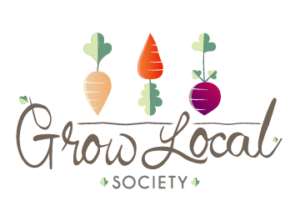When did you begin foraging? What got you interested?
I began foraging after moving out of my parents’ house. I had a beautiful patch of forest to
explore, and it was springtime. I already knew about picking a few greens like young nettle tops and maple blossoms, but was not familiar with the mushrooms I saw growing on the dead alder trees. They smelled fantastic- like fresh rain and anise, and looked conspicuously like the oyster mushrooms sold in the grocery store. I began to study- determined not to let this potential feast go untasted for mere lack of knowledge. Eventually I became confidant in matching all the features of the mushrooms in question with the identification key for Pleurotus pulmonarius; the PNW’s most common variety of oyster mushroom. Once I was confidant in the identification, I cooked and sampled a small piece. With no ill effects, I went back for a more substantial harvest the next day, and feasted on oyster mushrooms that whole rainy spring.
How did you educate yourself on what is edible, how to prepare them, etc?
To the surprise of many who ask, I did not learn to forage by some esoteric passage of secret knowledge down through family generations. The truth is much less interesting. Knowing nothing, I became curious. Curious, I began looking for identification books and good internet articles. After looking, I found many helpful sources, and guided by them I built an understanding of where, when, and how to find these elusive fungi, and how to distinguish them from their unsavoury kin.
 Where do you forage the most? Do you have spots you always go to, or do you often explore new areas?
Where do you forage the most? Do you have spots you always go to, or do you often explore new areas?
I find all my mushrooms at the very peak of Mt. Garibaldi. In the rock and ice? Sure…yep. Go ahead and check.
Responses like this are not uncommon when asking foragers about their foraging grounds. But, in all seriousness, I’m not worried about sharing a little real information. The lowlands of the Fraser Valley are great for spring greens like nettles, fiddleheads, watercress, false solomon’s seal, miner’s lettuce, and more. Vancouver island is one of our better chanterelle regions. Terrace is a mushroom Mecca, but especially famous for pine mushrooms. My best lobster mushroom patch is in the Kootenays. I explore new areas every year, but weather is a huge factor and the best approach is to go where conditions allow for a good flush of mushrooms, then check your patches there or find new ones. Returning somewhere only because it was great last year can be very disappointing.
Why is supporting local important to you?
Local, small business is what I believe a society ought to be made of. It is people who care about what they are doing, deal much more ethically, and form relationships with their customers. It makes society more human, and less market trend analysis. Locally sourced products and local talents both draw from and deepen the culture unique to that specific place, because what it has to offer cannot be found anywhere else in the world. The “local” movement is our chance to push back against the mono-(non?)culture that big business and globalization threaten. To me, all this is incredibly important.
 What do you like the most about selling at farmers market?
What do you like the most about selling at farmers market?
I have such difficulty with “the most” questions. I definitely like being around other vendors and buying very fresh vegetables. I like meeting and chatting with the people who stop at my table. I like the fresh air and being on my feet all day. I like the opportunity to share what foraging knowledge I have accumulated; encouraging others to get out there and harvest some tangible reasons not to clearcut our province. I like knowing I am providing people with real, nutritious food. It is an all-around enjoyable and invigorating place to call my work.
